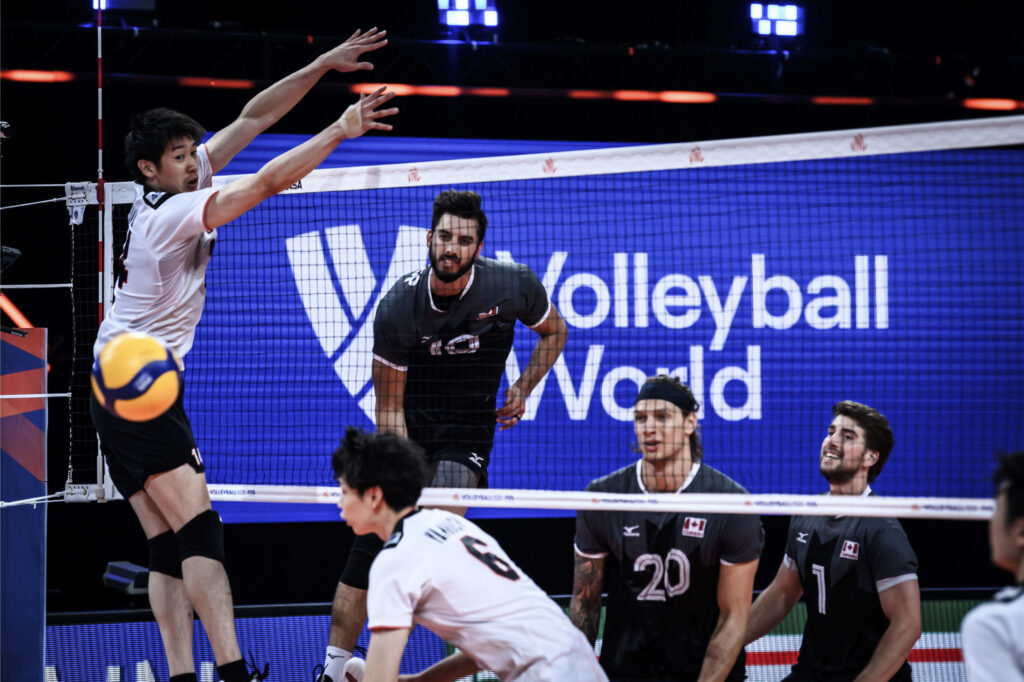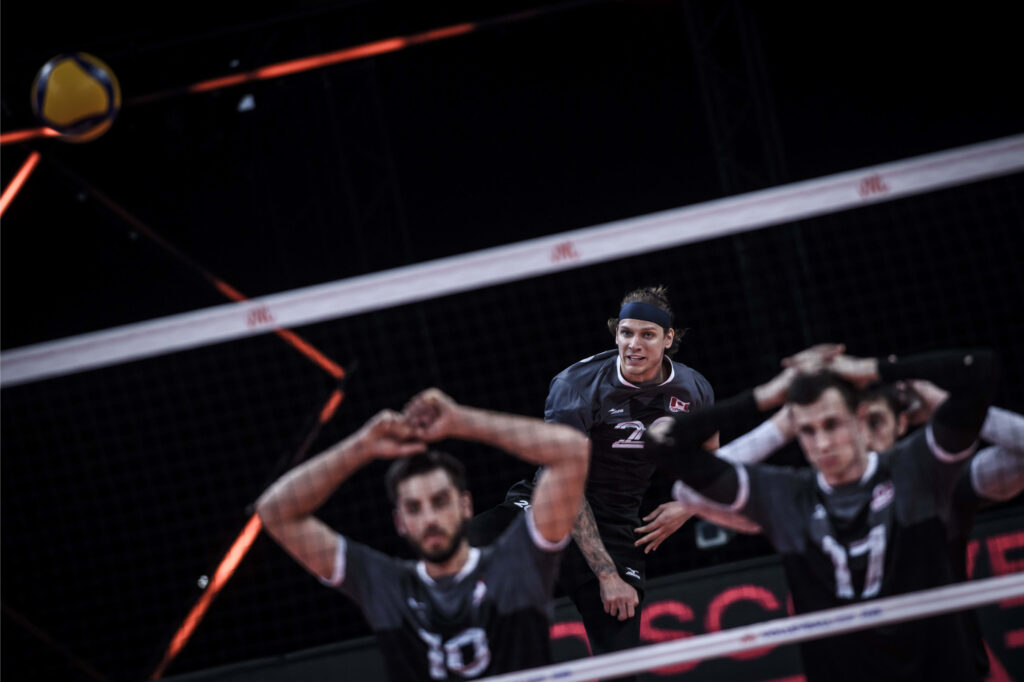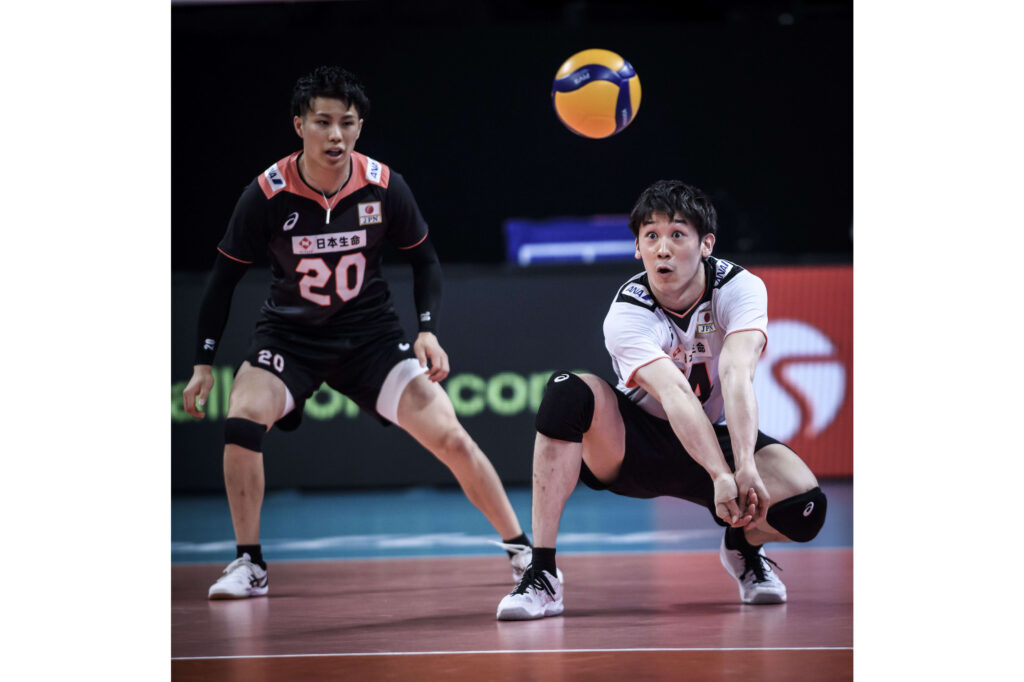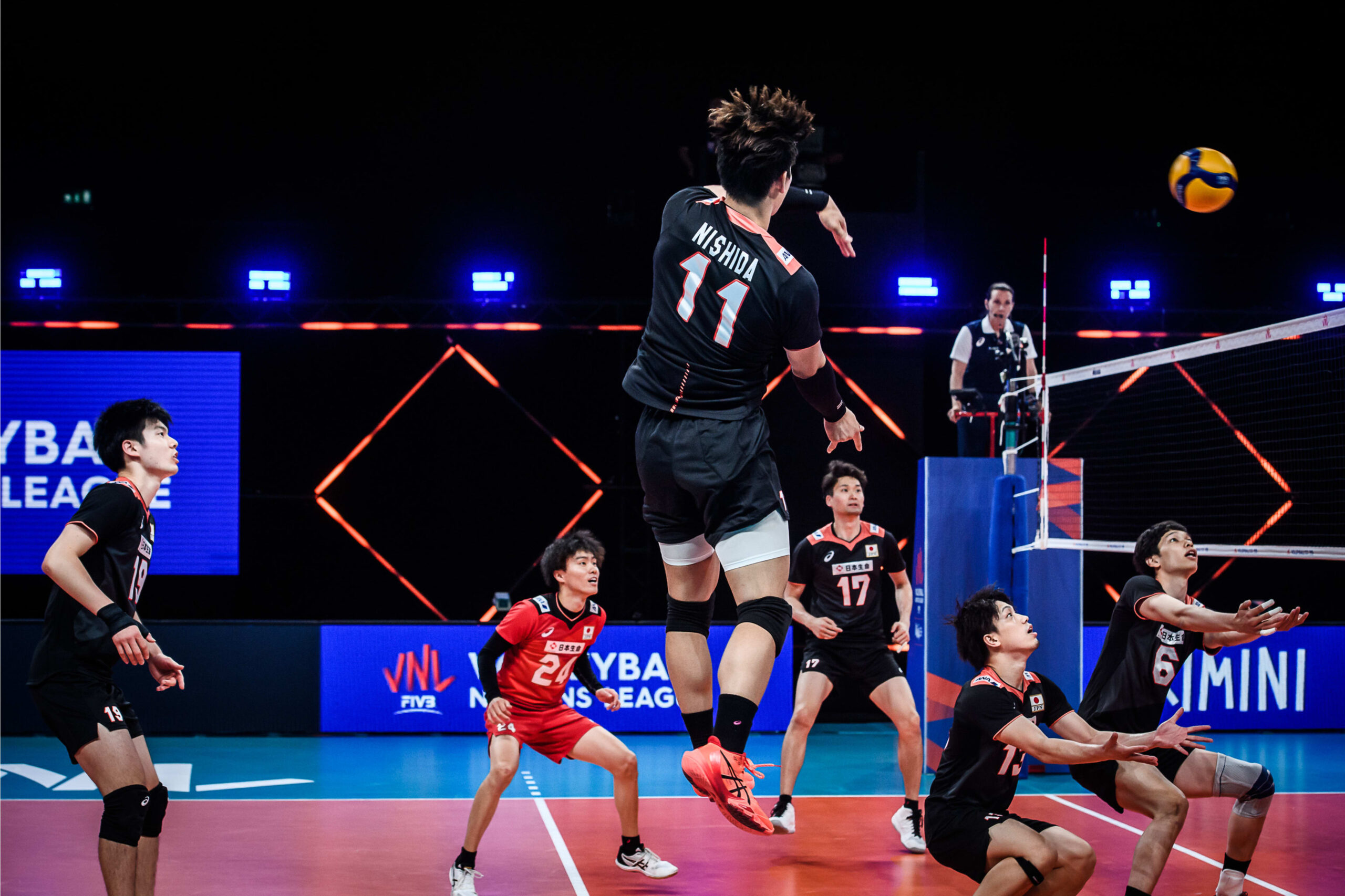⑫ vs Canada ●0-3(22-25, 23-25, 18-25)

Ishikawa's block and top-scorer Scrater. Photo by FIVB
First set starting lineup (serving order)
Japan
S Sekita, OH Ishikawa, MB Yamauchi, OP Shimizu, OH Takahashi Ai, MB Onodera, L Yamamoto
Canada
Perry, OH; Schwartz, MB; Sclater, OP; Marr, OH; Viglas, MB; Sanders, S; Byrne, L.
This match was a real miscalculation. I had a strong image of Canada's performance in this tournament and the victory in the 2019 World Cup when Nishida scored consecutive service aces, so I thought they were a "winnable opponent," but that wasn't the case. Canada was just as strong as usual.
On this day, Japan's team consisted of a full lineup including Ishikawa, but since Fujii had not yet recovered, Sekita started. Nishida was also waiting on the bench. Canada also had players who play in Europe, including Italy, lined up, including Marr, who was Ishikawa's teammate in Milan and competed with him for a position.
Yamauchi's quick score put Japan in the lead, and the early stages were in full swing. Nishida replaced Shimizu, who stepped down to serve at 14-11. It looked like a repeat of the World Cup, but despite some good serves, Canada got a side-out with one. After that, Sanders' serve gave Canada the lead, and at 16-16, Mar shut out Ishikawa and successfully turned the game around. After that, Schwartz's service ace and other plays helped Canada extend their lead, and Schwartz's quick score at the end gave Canada the first set 22-25. Japan's side-outs were not bad either, but the opposing setter Sanders skillfully spread the sets around, making it difficult for them to focus on one point, and they struggled with break chances.

Schwartz was outstanding with his quick kicks, serves and blocks. Photo by FIVB
In the second set, Sekita used Ai Takahashi and Onodera to spread out the sets, instead of using Ishikawa as the main focus. This worked, and Canada was leading 8-6 at the technical timeout. However, when the opponent Weiglas hit an ace, Canada was back on pace. Japan replaced Ai Takahashi with Takanashi to increase their offensive power, but they were unable to stop Canada's momentum once it had gained momentum, and they lost this set 23-25. Japan's serves were not working well.
In the third set, Canada took control of the pace, with Ma scoring service aces early on and Perrin scoring service aces in the middle. Japan replaced Takanashi with Takahashi Ai to stabilize the serve reception, but the flow did not change and the score difference increased. With Scrater at the opposite position, Canada's momentum was unstoppable. Japan could have tried replacing the setter with Oya, but Sekita remained. They also tried replacing the opposite with Otsuka, but there was nothing they could do. Viglas and Perrin scored service aces in the final stages, and in the end, Sekita's serve blew through the air, and Canada took the third set 18-25.
Japan was unexpectedly defeated by Canada in straight sets. On the other hand, Canada was able to get revenge for their loss two years ago. Canada's serves were strong today. Japan gave up a total of seven service aces to Canada in the three sets (and all five starters except the setter got at least one). That's a sure thing to lose. The third set ended up with a score difference that was almost like playing against Brazil. This match made us realize once again how frightening the world's serves are. There were plenty of good plays, such as Yamamoto's digs. I hope they will use this as motivation to give their all in the remaining three matches.

Photo by FIVB
